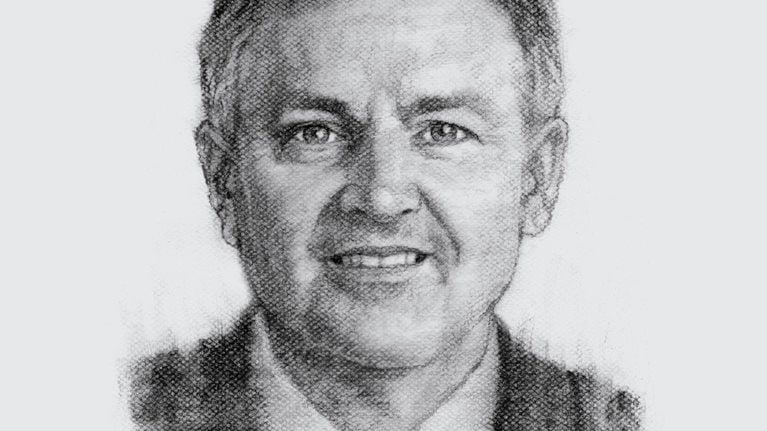Since 2005, the 800-lawyer, Chicago-based international law firm Seyfarth Shaw has been rethinking how it practices law, applying lean-management principles to create greater predictability, transparency, and collaboration—even in highly complex specialties. That experience has enabled Seyfarth to expand the scope of its advice beyond the resolution of legal problems, and now includes improving workflows within clients’ law departments and providing training on high-risk compliance issues. Seyfarth has sustained its commitment, winning accolades in the industry and showing unusual resilience through a period in which many storied law-firm names disappeared in mergers or bankruptcies. Over the past four years, the firm’s revenues have grown more than 20 percent, and profits are up more than 25 percent.
McKinsey’s Alex D’Amico and Christian Johnson jointly interviewed four members of Seyfarth’s management team: Andrew Baker, director of legal products and technology; Kim Craig, director of legal process improvement; Lisa Damon, a member of the executive committee; and Steve Poor, the firm’s chairman since 2001.
McKinsey: If we turn the clock back a few years, what were some of the challenges that you saw for the legal industry?
Steve Poor: “Disruption” may be a buzzword in the legal industry today, but not ten years ago. Firms were growing, profits were growing, rates were growing, and demand was outstripping supply.
That cycle camouflaged a structural problem. Corporate legal departments were facing more demands from internal clients to deliver higher value at a lower cost. As a result, the solutions that general counsels needed were becoming more sophisticated, driven by their desire to become value centers rather than cost centers. Law firms were not meeting that challenge.
One of our clients likes to say that he doesn’t buy legal services so much as he buys business solutions delivered by lawyers. His distinction points to a fundamental paradox: How do you raise the value of your services while controlling their cost?
McKinsey: Within Seyfarth, was there a shared view of where you were competing strategically and where the market was going?
Steve Poor: Not at that time, no. It posed an educational challenge for us, to help our colleagues see the problem in the same way we did. But it helped that we had already developed an executive training program with the Kellogg School of Business, which gave our partners a business literacy that law school alone doesn’t provide.
Lisa Damon: As a firm, we have always set an expectation that our partners would invest serious effort into their clients. Getting our partners to stand in their clients’ shoes extended this idea. We hosted a series of client speakers that included Tom Sager, who became DuPont’s general counsel. When Tom described how DuPont was bringing lean ideas into the legal department, it helped our partners see the potential because of lean’s focus on delivering value to clients.
McKinsey: How did you galvanize the leadership team around this idea?
Steve Poor: We started with two projects. The first was the review process for conflicts of interest—a complex, difficult task at any law firm. It is a high-pressure process requiring accuracy and speed, and centers on the continual evaluation of client relationships for conflicts that might require the firm to recuse itself. This was a pain point across our organization, so improvement would be highly visible.
The second project focused on a type of real-estate lending in which we were having trouble matching the market rate for the work. The lawyers who specialized in it were a small, well-defined team, so the scope was limited. And if we could help them become more successful, they would help convert their peers in other practice areas.
Once both projects were showing strong results, we started the next partnership meeting by saying, “We are embarking on this journey. We know you’re sitting there reading your paper and waiting for this latest management fad to pass. It’s not going to—this is going to be part of who we are and what we do as an organization, and here’s why.” One of our partners spoke about the changes in conflicts, where we reduced processing time by 86 percent and the number of errors by 90 percent. Then a partner from the lending group described how the changes led to better allocation of resources and higher fee recoveries.
McKinsey: Did anybody say, “That’s great for securitization, but my practice area is totally different”?
Andrew Baker: They did. In fact, one of our early training documents started with a slide saying almost exactly that. And, given the frequency at which we heard that response during the early years, we wanted to address that misconception whenever possible.
Steve Poor: But as we gathered more success stories, we began to eat into the mind-set of “my work is different—what I do is magic.” There are moments of magic in the practice of law, which you recognize and celebrate. But unless you can get people to think about it as a process, you can’t see all of the steps that make the magic possible or everything that needs to happen afterward to turn the magic into something tangible.
McKinsey: What was it like to define all of those steps?
Lisa Damon: So far, we’ve created “process maps” for more than 500 different workflows associated with legal work. For each type of project, such as a corporate acquisition, we assemble the best practitioners—partners, associate attorneys, project managers, technology specialists—around a table. They come up with a list of all of the tasks involved and estimate how much time each task should typically take. The end result is a form of what lean-management practitioners would call “standard work,” setting guidance for what each project should look like.
Andrew Baker: These aren’t exact scripts, but they give us more discipline. If our process map estimates that writing a particular contract should take two hours, and an associate starts to think the task will take closer to eight hours, that’s a signal to her that she should probably talk to somebody.
Lisa Damon: To avoid that result—and increase quality and efficiency—our process maps include “artifacts” such as model documents, checklists, and the like at each important step in a given process. Of course, we continually curate the process maps based on experience, legal developments, and client-based process improvements.
McKinsey: How have these maps changed the way you serve clients?
Lisa Damon: Having standards lets us be much more transparent, because we actually know what it takes to complete a given assignment. They provide more context for everyone involved. We make everything visible to clients through our collaborative technology platform—the to-do lists, the tasks, the status of each item against agreed-upon standards. That way, clients can immediately see the quantity and type of work they must manage, and can adjust workloads among their in-house and outside attorneys in line with strategic, financial, or other priorities.
Andrew Baker: Knowing that a client can log in at any particular point in time and see what’s happening is a huge motivator. That transparency creates powerful incentives, which shape the right perspective and behavior.
Lisa Damon: We also go through this process-mapping exercise with our clients. We put our process for corporate acquisitions on the wall and ask the client’s in-house counsel to add their activities. Invariably that conversation uncovers huge disconnects within the client’s own legal department and between the legal department and service departments. Once these gaps are identified, we can work together to solve the disconnects.
McKinsey: How did your attorneys react to the idea of being so open about their work?
Steve Poor: Historically lawyers have not been big on transparency or on standards to guide how they do their day-to-day tasks. But once you open the black box, you and your client can see the same data and the same problems. The conversations become more meaningful because you’re working together to improve how legal services are performed.
Andrew Baker: That has led to further shifts in how we run our engagements. The core team may now include not just a few partners and associates but also two project managers, a data specialist, and a technologist—all of them interacting with the client.
Lisa Damon: The organization has become very flat, because often a secretary knows more about a particular process stage or root-cause issue than the lead partner will. It’s an example of “adhocracy,” the idea that people have authority based on their actual expertise and knowledge of a situation rather than their title. That lack of hierarchy has become incredibly important to us in reinforcing collaboration. It’s an intense sense of cohesiveness; you feel it in the room as people are working together differently.
McKinsey: That is a big change for partners, no? How did you help them move from “I’m the center of this universe” to “I’m integral, but not essential for everything”?
Steve Poor: We were fortunate in that our organization has always been relatively flat; our founders insisted that everyone roll up their sleeves and work together. But we also recognized the fear of displacement, which comes from a belief that we lawyers are an artisanal guild. We’ve had to help our partners understand that following this approach raises their strategic value to the client, because it enables them to help clients solve much larger problems. Clients have more and different needs and we have more and different capabilities to serve them.
We see the same story replicated over and over again: senior partners who insist on leading discussions, but discover that the people they thought should sit quietly in the back of the room—people such as Kim or Andrew—are actually the ones the client wants to speak with. I won’t say that partners come out of that type of experience completely changed, but they do get a deeper understanding of the different roles we play. And they start to recognize the value that clients put on an entire package of capabilities.
McKinsey: How would a partner have seen his or her value ten years ago versus today, working in this new way?
Kim Craig: Many partners told us that they thought the main reason clients came to them was because of their deep expertise, so they worried that asking general questions about a client’s business problems might make them appear uneducated.
Andrew Baker: They always want to be Yoda. Our internal training helps partners feel more comfortable asking questions—even outside of their core area of expertise. This has opened up a lot of opportunities and allowed us to better align our services.
One of our apparel-industry clients was having trouble keeping track of what it had licensed to whom in which territory. The more questions we asked, the broader the solution became. While our solution definitely relied on legal expertise, technology and data visualization were equally important. Client personnel told us later that what we developed was completely different from what they had expected. And it led to more projects: Can you help set up a system that automatically routes contracts to the right person? Can you help us better orchestrate our activities across the globe so we meet important deadlines?
Kim Craig: The really critical outcome, though, was when one of our partners asked the general counsel: What keeps you up at night? He replied that he’d never heard a law firm ask him that, except during open bids for new business. It turned out that what he really wanted was a better work-life balance. He hoped that better processes would let him spend fewer hours worrying about work. It’s amazing to realize that these changes can actually improve someone’s quality of life.
McKinsey: How has Seyfarth’s relationship with clients evolved?
Lisa Damon: The changes enabled us to avoid the vendor mentality that has become so prevalent among law firms, some of which see themselves as just one among many vendors their clients use. The beauty of this approach is that it all but eliminates those blinders, because now we’re in a nuanced business relationship that supports an entirely different set of conversations.
McKinsey: Let’s say that for whatever reason, a client hasn’t started down the path you are opening and instead prefers a vendor relationship. What do you do?
Lisa Damon: Our teams work in the same way—our tools, our processes, our thinking—regardless of the client’s situation. This is not marketing; it’s simply how we operate.
Steve Poor: One of the challenges we faced early on stemmed from our own view of this methodology. To us, it seemed so good for clients that we thought the value would be self-evident. We sometimes forgot that our clients are lawyers, too, and the same resistance to change would play out in their organizations as it did in ours.
McKinsey: Where does the resistance typically come from with clients?
Andrew Baker: Lately the problem seems to be that everybody wants the easy button and the “one software package” to solve every issue. But once you start asking a few questions—to see which legal problems the organization has, how their business operates, who the gatekeepers are, how they track who is doing what—most clients start to realize how much complexity there is—and how much of it is driven by their distinct needs.
McKinsey: This sounds like a very different form of client service, requiring different skills from the ones law schools teach. How have Seyfarth’s changes affected how you develop your people—from recruiting through each career stage?
Steve Poor: There’s always been a gap between what law school teaches and what you need to do as a practicing lawyer. I think that gap is bigger now than ever, because being a really good “classic lawyer” is no longer enough. Our people have to be facile with technology. They have to follow a different approach to problem solving. And they have to operate in a changed environment.
Andrew Baker: Right now we need candidates with multidisciplinary backgrounds—mixes of law, business, process, project management, technology, and others areas. For instance, one of our roles calls for a connection both to statistics and law. There aren’t many people like that, so we’re working with several law schools to try to create more of them. We’ve invested a lot in our current people to bolster those skills and create programs in emerging disciplines such as design thinking and systems design. But it would be wonderful if our candidates came in already having these capabilities.
McKinsey: How do you see this evolution continuing?
Steve Poor: We’re opening new channels for people to come into our organization. The standard associate track from law school is no longer the only option.
Kim Craig: More and more students are interested in combining the practice of law with the business of law. So we hire law-school graduates into our project-management and technology roles.
Steve Poor: Much of our management infrastructure rests on measuring people’s competencies. That is how we make promotion decisions—not because someone has been here for a certain number of years.
McKinsey: How do you expect the practice of the law at leading firms to evolve over the next decade?
Steve Poor: A handful of firms probably won’t change much, because they have a mystique. The vast bulk of firms, however, will need to find a different path. The solutions that companies need are becoming more diverse and the competition is becoming more diverse as well, with specialists targeting particular streams of work and technology companies moving into the field. The idea that you can simply get bigger or raise rates every year will not hold.
McKinsey: How do you see client expectations changing?
Lisa Damon: Some of our clients are already talking about “horizon expertise”—helping them see what’s coming, instead of paying us to solve the current problem.
Steve Poor: Increasingly we’re called on to present hybrid solutions that incorporate law, technology, service-delivery mechanisms, and other expertise. One global company is trying to identify patterns of workforce utilization worldwide, so we are working with economists and related experts to try to predict some of the emerging dynamics.
McKinsey: How has the way that you lead changed as part of this journey?
Steve Poor: I’ve been learning patience and persistence. You have to recognize that people won’t necessarily accept change just because of a flash of insight that you so graciously share with them. It’s a matter of taking pride in the small victories, rather than needing the big victory.
Lisa Damon: To me, it’s about listening—meeting a partner or client or team at whatever stage they are in and finding affinity with them. What do they need? What is their value story? What can we tap into to help create what’s often a revolutionary change? This is a huge transformation, and it’s up to us to find the opportunity to help people push forward.


